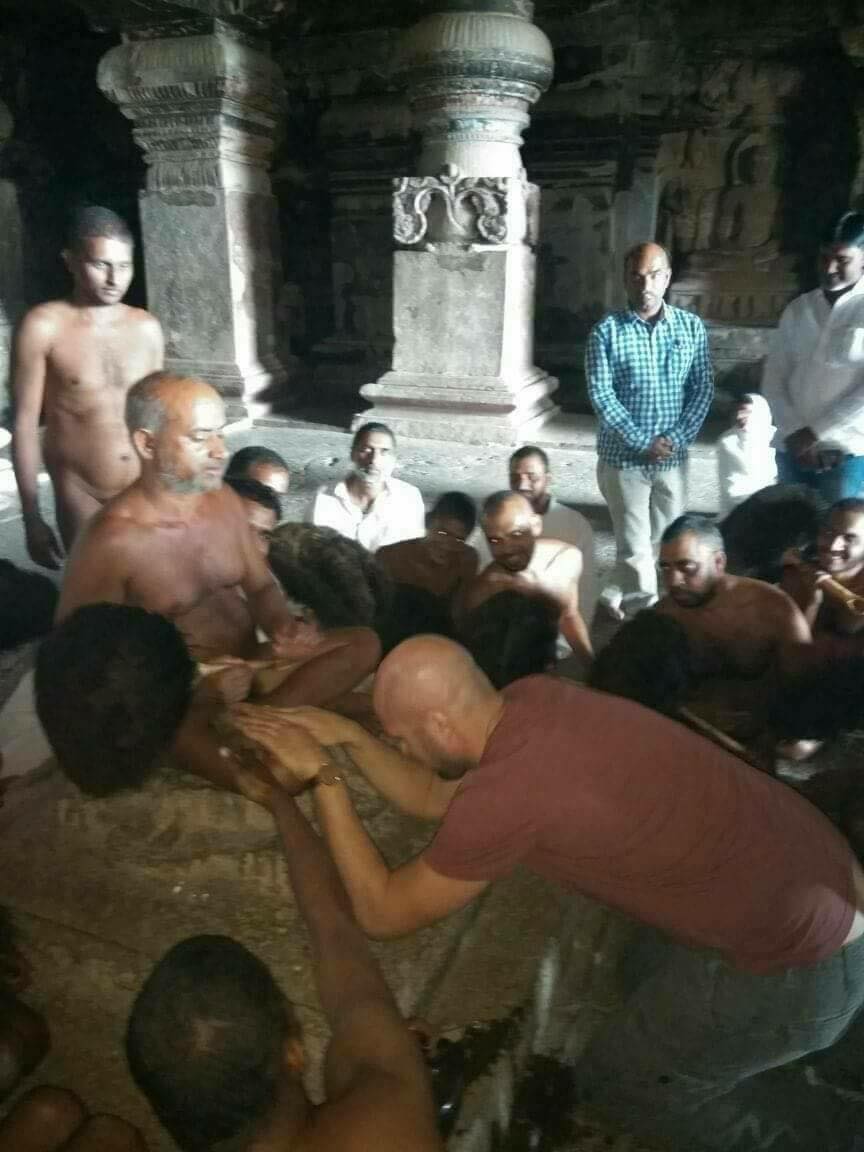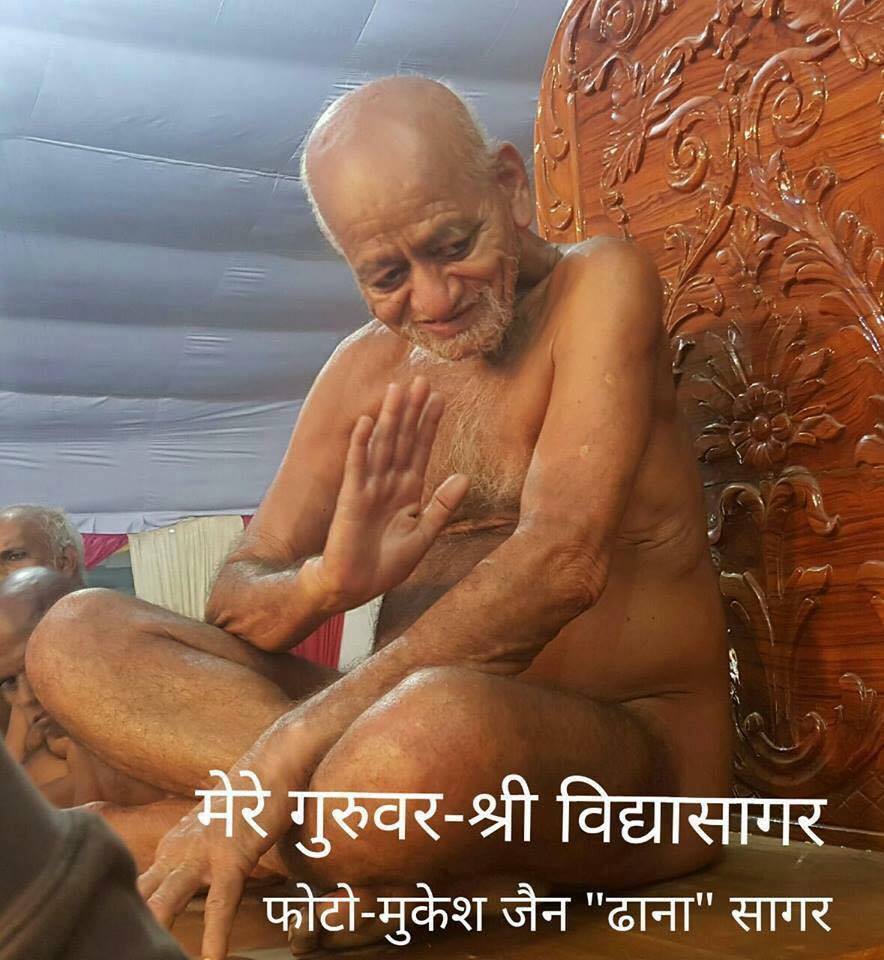Update
What is the meaning of SYADVADA?
Syadvada is the most significant contribution of Jainism to the human society. The term ‘Syat’ means relatively probable and ‘Vada’ means Ism or method of presentation. Thus Syadavda literally means the method of examining different probabilities. Everyone knows that lot of disputes arise on account of difference of opinions. People generally believe that whatever they think is right. They therefore tend to oppose any view that does not agree with theirs. Even a slight analysis of such disputes would indicate that there might be partial truth in the apparrently opposing views and the parties to the dispute might be merely stressing their views from different angles.
Everything in the world is multi-propertied. For instance, sugar is white, sweet, granular etc. Now if a person simply states that sugar is sweet, he is not wrong. He has however mentioned only one property of sugar. His statement is therefore a partial truth, not the whole truth. If another person states that sugar is white, he also states partial truth. The properties of sugar are universally known and there is hardly any possibility for a person to pick up dispute about its properties. But to a person, who has simply seen sugar but has never tasted it and has not otherwise known about its sweetness, the statement of sugar being sweet makes no sense. For him, sugar is white and granular. There arises therefore a hypothetical probability of his disputing the sweetness of sugar until someone brings sugar and asks him to taste it.
Real disputes arise in the case of substances having variable properties. For instance, grapes may be green, red or black. Any one of these colours signifies the simultaneous nonexistence of other colours. Therefore anyone who has seen only green grapes, would dispute the existence of red or black grapes. We can also visualize disputes about grapes being seeded or seedless. People normally do not pick up disputes on such scores, because they do not happen to hold strong views about them. They usually tend to ignore such differences. On ideological issues like capitalism vs. communism or ephemeral vs. everlasting nature of soul, however, people generally hold very strong views. Since such views happen to be diametrically opposite, such people cannot tolerate the differing views. Let us take the case of soul. Vedanta believes in eternal, immutable, indestructible soul; while Buddhism believes it to be ephemeral, ever-changing, destructible. Each of them would insist that it is right and anything to the contrary is wrong and irreligious. Now, science states that no substance is entirely destructible. Since soul is also a substance, obviously it is eternal and indestructible. On the other hand, every substance undergoes changes in its states. States of the soul also undergo changes. The state of a person, when overcome with defilements, is totally different from the one when he is equanimous. Every change means destruction of earlier state and emergence of the new one. Thus in terms of changing states, soul is ephemeral and destructible. Syadvada would therefore state that the views of Vedanta as well as Buddhism express partial truth and not the whole truth. It would exhort both of them to admit the partial truth of the other. The dispute over such issues can thus be easily averted by resorting to Syadvada.
Much criticism has been levelled against Syadvada by other schools of thought. It has been labelled as the ism of uncertainty and as the theory of avoiding the issues. All such accusations are however ill based. Syadvada does not give rise to any uncertainty. It rightly states that every view, every aspect can have some truth and therefore partial justification. One may state that Lord Mahavira was the son of King Siddhartha, another may state that he was the son of Queen Trishala, the third may state that he was the nephew of Suparshwa, the fourth may state that he was the brother of Nandivardhan and so on. None of these statements is incorrect. All of them have been made, keeping in view some particular relation of the Lord with a specific person. It would therefore be futile for anyone to deny any of those statements. None of them however singly presents the complete truth about the relations of the Lord Mahavira. Real truth is the sum total of all such statements. The Syadvada states that every statement can have some truth. We have simply to examine it from some specific standpoint. It endeavours to find the relative truth of seemingly opposite views and would like to give justice to the respective view to the extent concerned. It is the Jain theory of relativity propounded at least 2500 years back. This justification of different views from the respective perspective is also known as Anekantvada (refer post no #5 for more detail about Anekantvada).
Making any statement from one single view point is known in Jain traditions as Naya. The term literally means to lead. Naya therefore means leading to a truth from a particular view point. There could be as many Nayas as there are view points. Broadly, however, they can be classified in two categories. Those relating to substantial aspect are known as substantial or Dravyarthic Naya and those relating to changing aspects are known as Subjective or Paryayarthic Naya. The statement of the soul being eternal has been made from Dravyarthic Naya; and that of its being ephemeral has been made from Paryayarthic Naya. These two main categories are subdivided into seven sub-categories. Each of these seven Nayas is supposed to present partial truth of any phenomenon expressed from a particular angle (we will talk about this in future post). Significance of this method lies in the fact that it leads to tolerance of differing views. Students of history are aware of the havoc perpetrated on account of intolerance. How much blood has been spilled all over the world, simply because people in power could not appreciate the differing views of others? Paradoxically enough, this was mostly done in the name of religion. It was conveniently forgotten that tolerance is the essence of religion. If they had learnt Syadvada, they could have accepted at least the partial truth of the differing views and avoided the bloodshed.
Jainism does not stop with the admittance of different views. Its objective is to arrive at the complete truth, the absolute truth. This cannot be done without considering each and every view point. If one fails to consider the truth of any single view, he cannot hit upon the complete truth, By Syadvada Jainism tries to give appropriate justice to all the views of any phenomenon and eventually to derive unequivocal, indisputable truth. This can also be termed as arriving at final truth on the basis of all partial truths. For instance, after examining the different views about the soul, Jainism would state that the soul, as a substance, is eternal but its states undergo changes from time to time. Thus, instead of leading to uncertainty or doubts, Syadavda helps in leading us to the ultimate certainty, where there is absolutely no scope for any doubt. It is the process of arriving at Ekant(One) truth through Anekanta (many) truths.
Update
आचार्य श्री विशुद्ध सागर जी से प्रभावित हो कनाडा के कुछ विदेशी पर्यटक भारतीय संस्कृति में जैन दर्शन की अहिंसा और अनेकांतवाद को समझते हुए।साथ ही जैन आचार्य और मुनि की चर्या के साथ विश्व में अहिंसा की आवश्यकता को समझते हुए।इस अवसर पर मुनि श्री प्रणीत सागर जी ने अंग्रेजी भाषा से हिंदी भाषा में हिंदी भाषा से अंग्रेजी भाषा में एक उत्तम ट्रांसलेटर की भूमिका निभाई। #AcharyaVishuddhasagar
 Source: © Facebook
Source: © Facebook
विद्यागुरु सम शिल्पी हो तो, जन्म जन्म पत्थर बन जाऊँ |
दें आकार मेरे गुरुवर तो, मैं गीली माटी बन जाऊँ |
पा स्पर्श तेरा निर्मोही, अपने सारे पाप नशाऊँ s
चरणों की जो धूलि मिले तो, धर मस्तक मुक्ति पा जाऊँ |
🍃🍂🍃🍂🍃🍂🍃🍂
-जैन ब्रजेश सेठ,पाटन
- - - - - - - www.jinvaani.org @ Jainism' e-Storehouse.
 Source: © Facebook
Source: © Facebook
News in Hindi
अग्नि जलती नही जलाती है -आचार्य श्री विद्यासागर जी #AcharyaVidyasagar #Dongargadh_Latest
आचार्य श्री विद्यासागर महाराज जी ने कहा की आप लोग कहते हैं की अग्नि जल रही है जबकि अग्नि जलती नहीं जलाती है, जलता तो इंधन है | इसी प्रकार गाड़ी अपने आप चलती नहीं है उसे ड्राईवर चलाता है | वैसे ही हमारी आत्मा हमारे शरीर को चलाती है और हमारा शरीर उसी के अनुसार कार्य करता है इसे ही भेद विज्ञान कहा जाता है जो इसे समझ लिया उसे फिर कुछ और समझने की आवश्यकता नहीं होती है | यह शरीर उस आत्म तत्व के लिए एक जेल के सामान है वह इसके अन्दर कैदी की भांति कैद है | हम जो भी कार्य करते हैं उठते, बैठते, चलते - फिरते एवं आदि जो भी शरीर के द्वारा दैनिक क्रियाएँ करते हैं वह सब आत्म तत्व के द्वारा ही निर्देशित होता है शरीर तो केवल उसके अनुरूप कार्य करता है | हमें केवल अपने आत्म तत्व की ओर ध्यान देने की आवश्यकता है | यह जानकारी चंद्रगिरि डोंगरगढ़ से निशांत जैन (निशु) ने दी है।
 Source: © Facebook
Source: © Facebook
